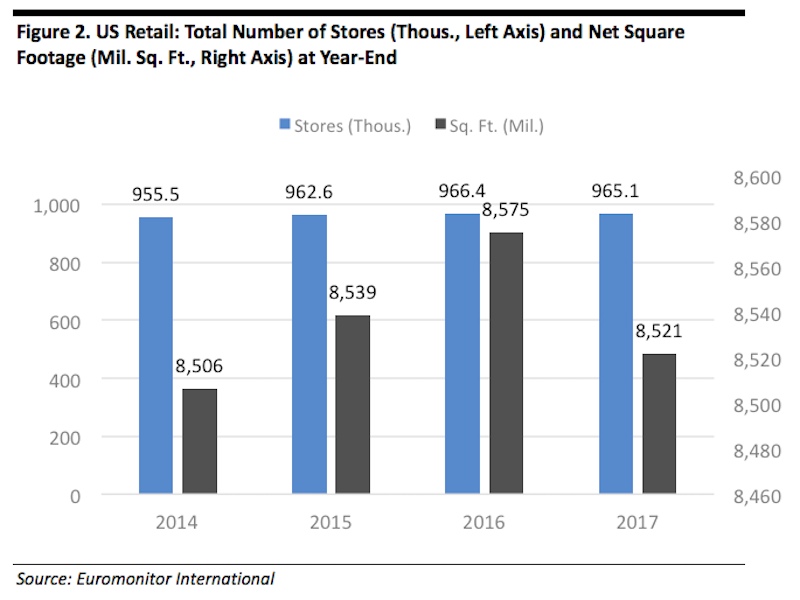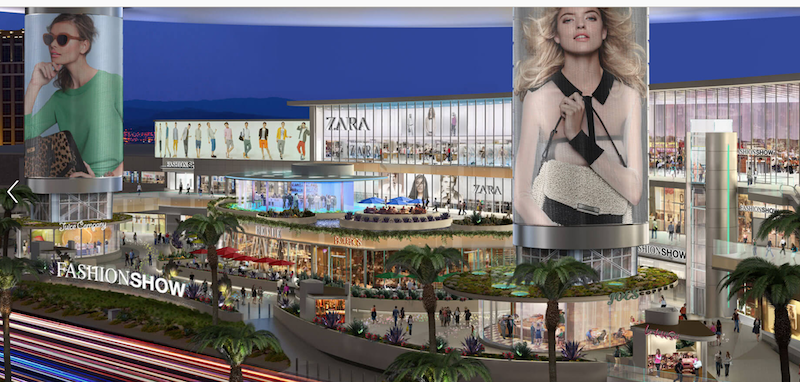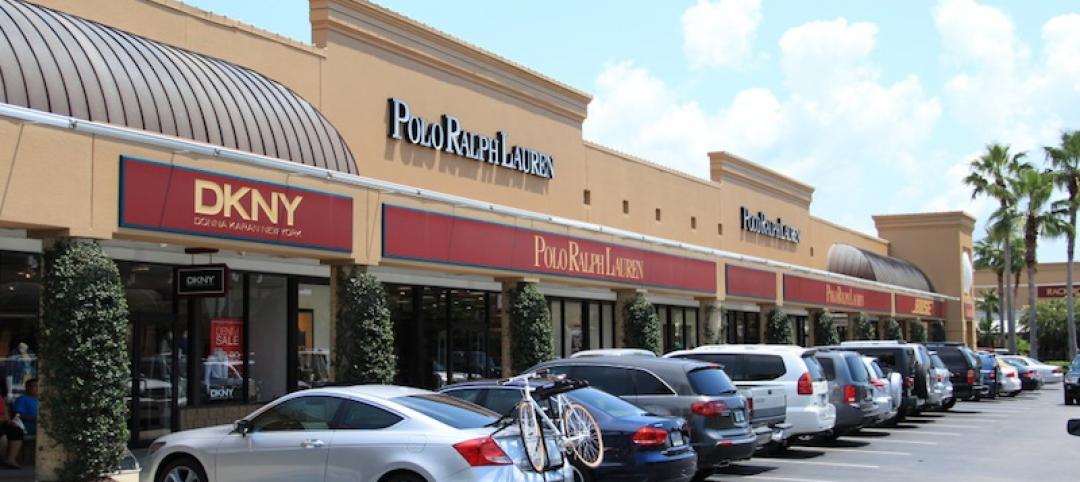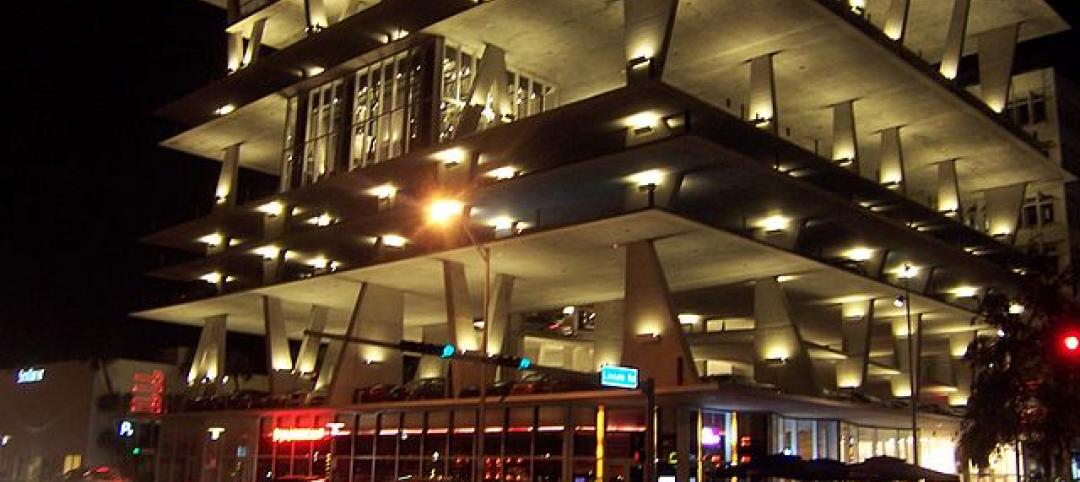Retailers went through another tough year in 2017, during which store closings included 1,430 Radio Shacks, 808 Payless ShoeSource outlets, 667 Ascentas (which sell nutritional supplements), and 600 Walgreens.
That brick-and-mortar attrition continued in the first month of 2018, when Sears announced it would close another 103 Sears and Kmart outlets, and Toys ‘R’ Us—whose debt now totals about $5 billion—said it would close up to 182 units, reducing its total in the U.S. by one fifth. The carnage this year will also eliminate 379 Teavanas (Starbucks’ struggling tea retail outlets), 200 Gaps and Banana Republics, 63 Sam’s Clubs, 11 Macy’s, 40 Bon-Tons, 50 J. Crews, and between 100 and 150 Michael Kors boutiques.
Physical stores continue to get hammered by online shopping that accounted for more than 9% of total U.S. retail sales last year. However, not every physical vestige of retailing is collapsing under the pressure from eCommerce. 7-Eleven this month made the biggest acquisition in its history when it paid $3.2 billion to buy 1,030 convenience stores in 17 states owned by Sunoco LP, raising its total store count in North America to close to 9,700.
Earlier this month, the New York Post ran an article under the headline “There’s never been a better time to open retail stores in NYC.” The story pointed out how retailers from several countries are scouring New York for real estate. Levi’s will soon relocate its flagship store into a larger, 17,250-sf space in Vornado Realty Trust’s 1535 Broadway. Other retail chains looking for more space in the Big Apple include Target and Lord & Taylor.
That retailers come and go is hardly news to anyone who follows this sector or, for that matter, shops. But the constant drumbeat about a “retail apocalypse” is still premature, according to a report released this month by the research and consulting firm Fung Global Retailing & Technology (FGRT).

Despite weaker foot traffic, there was only a slight net decline in total U.S. retail stores last year, the first dropoff since 2009.
The report acknowledges that shopper traffic dropped off by 7.9% last year. And 6,995 stores closed in the U.S. in 2017 representing a net decline of 0.1%, according to Euromonitor International, which also estimated a 0.6% decrease in total retail selling space to 8.52 billion sf.
But the store-count reduction was the first since 2009, and it seemed to hit the apparel, mass merchant, and electronics and appliance sectors the hardest.
The grocery and dollar-store sectors, on the other hand, expanded “significantly” last year, with major dealers in those sectors opening a net 1,785 outlets. Other retailers, like the supermarket chain Aldi and the department store T. J. Maxx, are actively opening stores in off-mall and strip-mall locations.
Indeed, selling space for variety stores rose by 4.4% last year, by 1.3% for grocery stores, and by 1% for warehouse clubs.
FGRT points out that while brick-and-mortar retailers are getting more business from online sales, their in-store business continued to expand last year. Nearly 88% of all U.S. retail sales were transacted in physical stores in 2017, according the Census Bureau data. Offline retail sales grew by about 2.5%, and contributed to total U.S. retail sales increasing by 4%.
The study also notes that if online sales were taken out of the equation, the average sales per retail store rose 2.4% to $3.13 million, and average sales per square foot increased by 2.6% to $353.
It’s been conventional wisdom for a while that regional malls have been fast approaching their expiration dates. But FGRT states that superregional malls—defined by having at least 800,000 sf of selling space—were the only major shopping-center segment to grow its occupancy rates last year. FGRT also notes that open-air centers have proven to be a resilient real-estate segment, primarily because they typically have few apparel tenants and often include a strong grocery component.
Mall owners in general are diversifying their mix to incorporate more centers with premium tenants like Apple and even Tesla (which currently operates 109 retail showrooms nationwide). David Simon, CEO and Chairman of Simon Property Group, the country’s largest retail developer, says his company sees “significant opportunity” in densification of its shopping centers with the addition of mixed-use elements such as hotels, multifamily, and offices.
Another developer, Kimco, which was negatively affected by Sports Authority’s liquidation, sees future tenant mixes including more nascent retail chains such as Lidl and HomeSense from TJX. “Kimco is adapting to [the] evolving landscape by working hard to deliver both the product and an experience to tenants and shoppers commensurate with this new world order,” says CEO Conor Flynn. “That is why at many of [our] sites, you’ll see more health and wellness, more service providers, more food and restaurants, more entertainment and more experiential retailing.”
Related Stories
| Jun 5, 2013
USGBC: Free LEED certification for projects in new markets
In an effort to accelerate sustainable development around the world, the U.S. Green Building Council is offering free LEED certification to the first projects to certify in the 112 countries where LEED has yet to take root.
| Jun 3, 2013
Construction spending inches upward in April
The U.S. Census Bureau of the Department of Commerce announced today that construction spending during April 2013 was estimated at a seasonally adjusted annual rate of $860.8 billion, 0.4 percent above the revised March estimate of $857.7 billion.
| May 31, 2013
Japan to transform canal into world's largest outdoor pool
A wild proposal by the city of Osaka, Japan, would transform the Dotonbori Canal into a 2,625-foot-long, 40-foot-wide pool.
| May 22, 2013
Return of retail? Rent growth seen in recovering markets
Like digging a ditch with a spoon, retail demand driven by population growth has eaten away at the supply of available store space in the markets that have been slowest to recover from the downturn. Vacancy rates are reaching a point that will give at least some landlords in every market the clout to demand slightly higher rents.
| May 21, 2013
7 tile trends for 2013: Touch-sensitive glazes, metallic tones among top styles
Tile of Spain consultant and ceramic tile expert Ryan Fasan presented his "What's Trending in Tile" roundup at the Coverings 2013 show in Atlanta earlier this month. Here's an overview of Fasan's emerging tile trends for 2013.
| May 20, 2013
Jones Lang LaSalle: All U.S. real estate sectors to post gains in 2013—even retail
With healthier job growth numbers and construction volumes at near-historic lows, real estate experts at Jones Lang LaSalle see a rosy year for U.S. commercial construction.
| May 16, 2013
Chicago unveils $1.1 billion plan for DePaul arena, Navy Pier upgrades
Hoping to send a loud message that Chicago is serious about luring tourism and entertainment spending, Mayor Rahm Emanuel has released details of two initiatives that have been developing for more than a year and that it says will mean $1.1 billion in investment in the McCormick Place and Navy Pier areas.
| Apr 30, 2013
Tips for designing with fire rated glass - AIA/CES course
Kate Steel of Steel Consulting Services offers tips and advice for choosing the correct code-compliant glazing product for every fire-rated application. This BD+C University class is worth 1.0 AIA LU/HSW.
| Apr 26, 2013
BIG tapped to design Europa City in suburban Paris
Danish architecture firm, BIG - led by Bjarke Ingels – has been announced as the winner of an international invited competition for the design of Europa City, a 800,000 square meter cultural, recreational and retail development in Triangle de Gonesse, France.
| Apr 26, 2013
Solving the parking dilemma in U.S. cities
ArchDaily's Rory Stott yesterday posted an interesting exploration of progressive parking strategies being employed by cities and designers. The lack of curbside and lot parking exacerbates traffic congestion, discourages visitors, and leads to increased vehicles emissions.

















